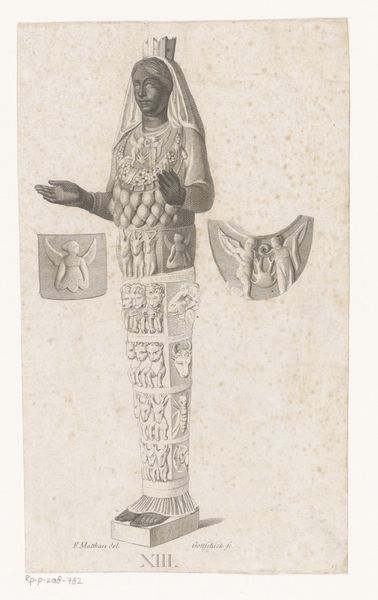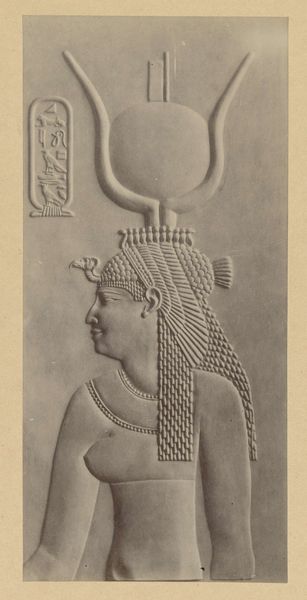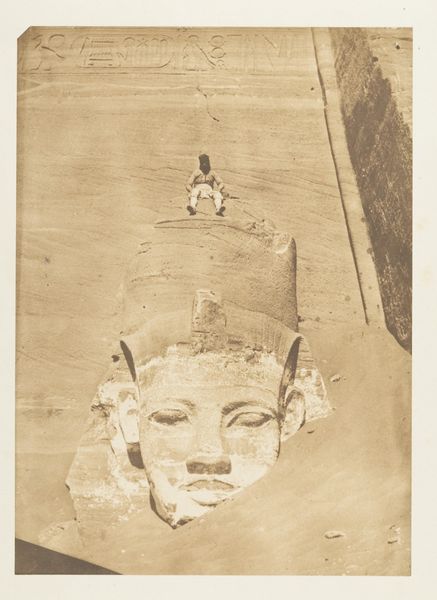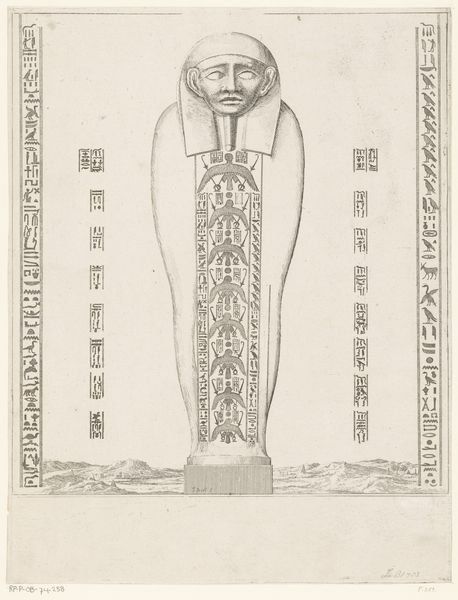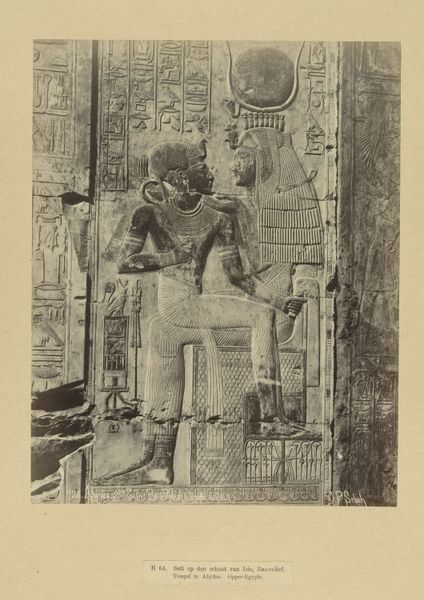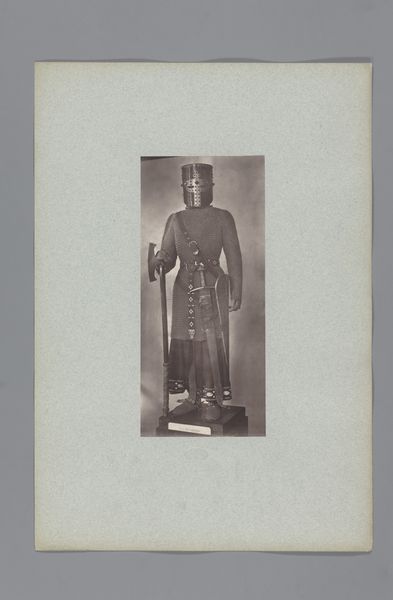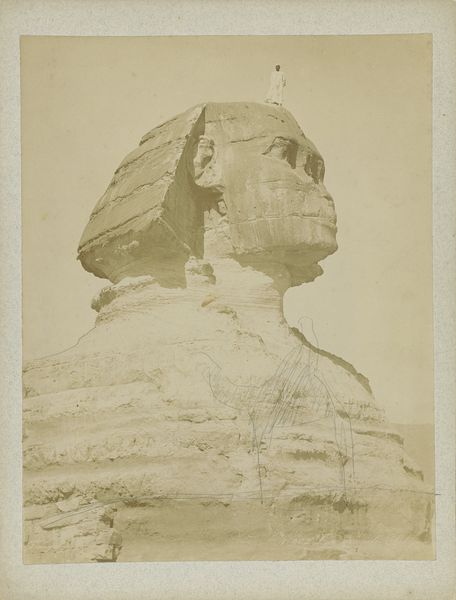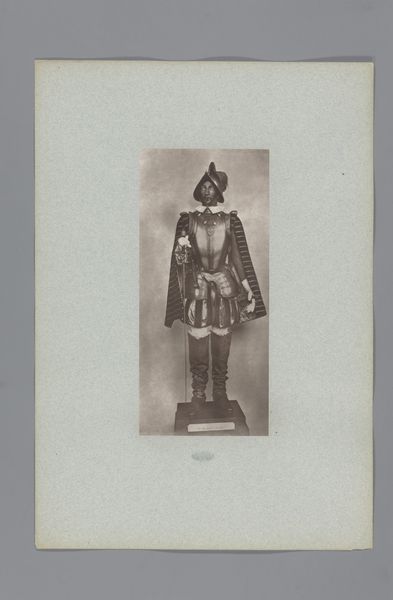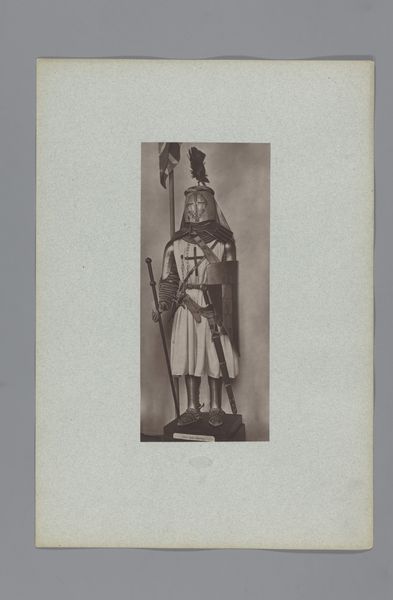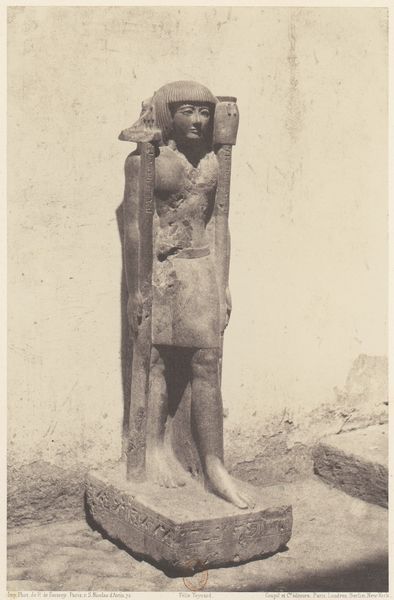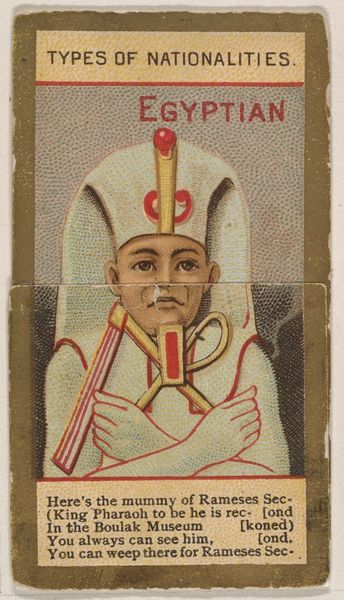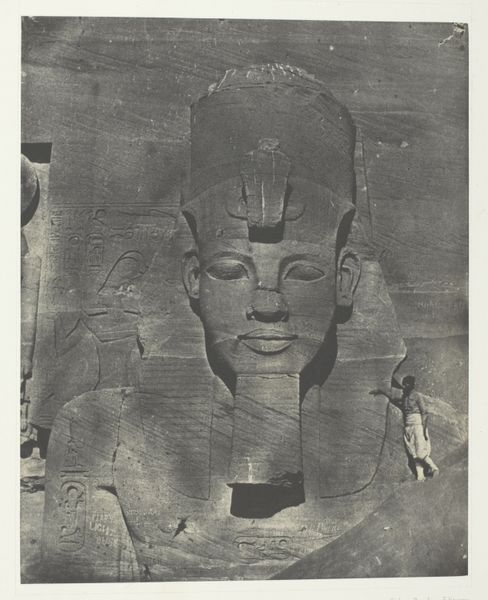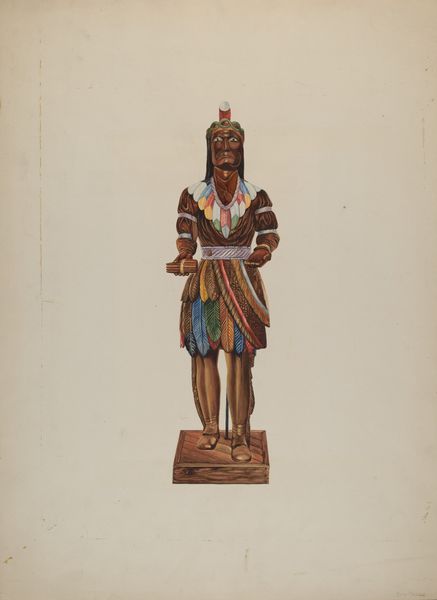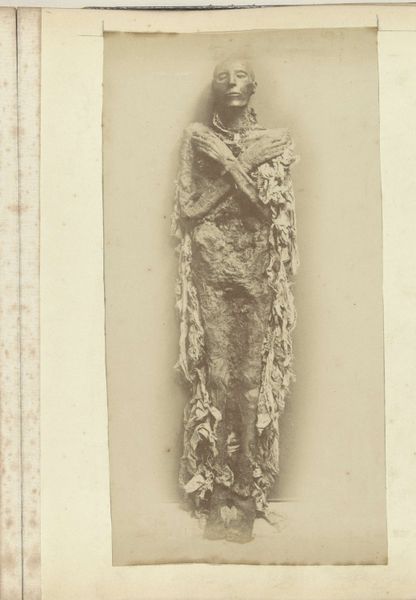
photography, gelatin-silver-print
#
portrait
#
still-life-photography
#
light coloured
#
ancient-egyptian-art
#
photography
#
portrait reference
#
ancient-mediterranean
#
yellow element
#
gelatin-silver-print
#
portrait drawing
Dimensions: height 240 mm, width 180 mm, height 558 mm, width 469 mm
Copyright: Rijks Museum: Open Domain
Editor: Here we have a gelatin-silver print, likely from between 1890 and 1895, showing the lid of Pharaoh Ramses II’s sarcophagus. The image is quite striking; it captures a detailed likeness. How do you interpret this work, particularly as a photographic representation of an ancient artifact? Curator: It’s fascinating to consider this photograph as more than just documentation. Think about the context in which this image was created—late 19th century, a period of intense European colonial interest in Egypt. This photographic reproduction arguably participates in a form of cultural appropriation. Editor: That's interesting. So you're saying the photograph, while seemingly neutral, actually has political undertones related to colonialism? Curator: Exactly. The act of photographing and disseminating this image allowed Western audiences to possess, in a way, a piece of Egyptian history. Who was the photographer? What were their intentions? Understanding these things allows us to critically analyze what this image represents. We must always ask, "who benefits?" from this representation and "whose narrative is being told?" Editor: So the photograph becomes a kind of stand-in for the real artifact, a way for the West to sort of "own" Ramses II? Curator: Precisely! And think about how this photographic medium changes our perception of the object itself. Photography can democratize access, but it also flattens the multi-dimensional experience of encountering the actual sarcophagus lid. It's a representation mediated through a very specific lens—literally and figuratively. Editor: That's a lot to consider, it really makes you rethink what you’re seeing and how we see it. Curator: Absolutely, viewing this photography prompts questions about power, representation, and the complexities of cultural exchange and the lingering echo of colonial influence in today's world.
Comments
No comments
Be the first to comment and join the conversation on the ultimate creative platform.
